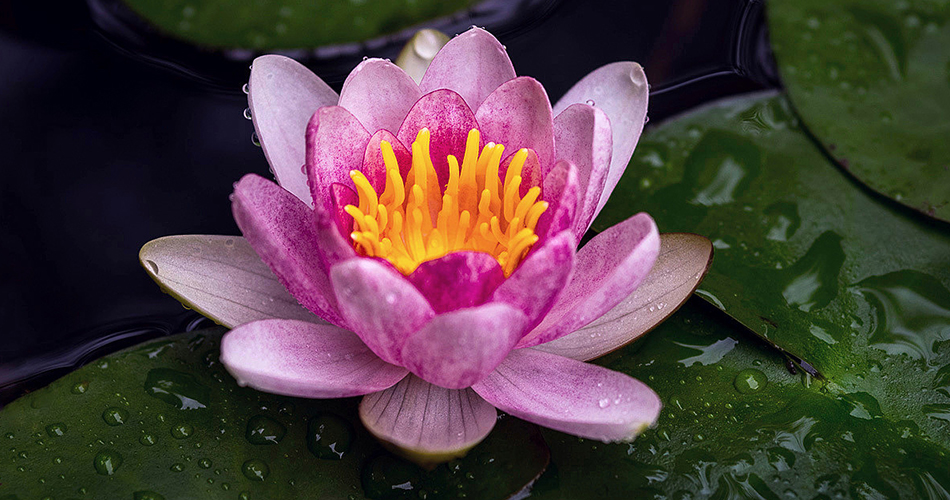Water lily, or pond lily, is a member of a large family of plants that has representatives in every part of the world. They all have long perennial rootstocks. They send their flower and leaf stalks up to the surface of the water on which they float. The flowers and leaves of some tropical kinds rise above the water. The starry, many-petaled flowers open at different times during the day. Hardy varieties are usually early closing day bloomers. Others remain open only at night.
Water lilies vary in size from pygmies, with 2-inch leaves and flowers no larger than cherry blossoms, to gorgeous tropical varieties with leaves 5 feet in diameter and flowers 12 inches across. There are occasional larger forms. A single leaf of the great royal water lily of the Amazon can support the weight of a man. The fruit matures and bursts under water and the seeds float off.
The commonest wild North American water lily is white, but there are also pink and yellow forms. By cultivation, many very beautiful hybrids have been developed. These are not only white, but many shades of pink, yellow, red, and blue. Except the hybrids, water lilies may be started either from seed in shallow tanks, or from tubers planted in boxes of rich loam placed in the bottom of concrete pools, two or three feet deep. Besides the true water lilies, the family includes the yellow pond lily or water chinquapin of the United States, the sacred lotus of India, and the giant Victoria regia of the Amazon.


Be First to Comment